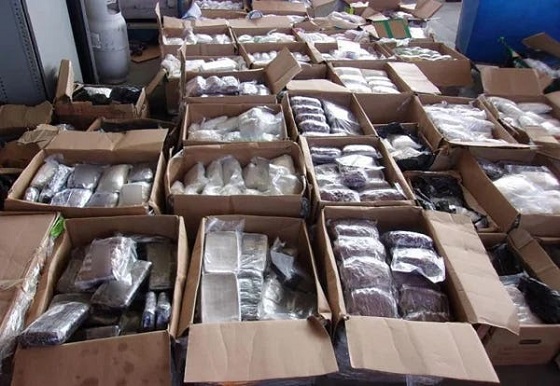Crime
Despite recent bail reform flip-flops, Canada is still more dangerous than we’d prefer

Our Criminal Justice System Is Changing
58 percent of individuals sentenced to community supervision had at least one prior conviction for a violent offence. 68 percent of those given custodial sentences were similarly repeat offenders. In fact, 59 percent of offenders serving custodial sentences had previously been convicted at least 10 times.
Back in 2019, the federal Liberals passed Bill C-75, “An Act to amend the Criminal Code, the Youth Criminal Justice Act and other Acts”. Among other things, the law established a Principle of Restraint that required courts to minimize unnecessary pre-trial detention. This has been characterized as a form of “catch and release” that sacrifices public safety in general, and victims’ rights in particular on the altar of social justice.
I’m no lawyer, but I can’t see how the legislation’s actual language supports that interpretation. In fact, as we can see from the government’s official overview of the law, courts must still give serious consideration to public safety:
The amendments…legislate a “principle of restraint” for police and courts to ensure that release at the earliest opportunity is favoured over detention, that bail conditions are reasonable, relevant to the offence and necessary to ensure public safety, and that sureties are imposed only when less onerous forms of release are inadequate.
So unlike in some U.S. jurisdictions, Canadian courts are still able use their discretion to restrict an accused’s freedom. That’s not to say everyone’s always happy with how Canadian judges choose to use such discretion, but judicial outcomes appear to lie in their hands, rather than with legislation.
The Audit is a reader-supported publication. To receive new posts and support my work, consider becoming a free or paid subscriber.
Arguably, C-75 did come with a “soft-on-crime” tone (in particular as the law relates to certain minority communities). But even that was mostly reversed by 2023’s Bill C-48, which introduced reverse onus for repeat offenders and required judges to explicitly consider the safety of the community (whatever that means).
Nevertheless, the system is clearly far from perfect. Besides the occasional high-profile news reports about offenders committing new crimes while awaiting trials for previous offences, the population-level data suggests that our streets are not nearly as safe as they should be.
As far as I can tell, Statistics Canada doesn’t publish numbers on repeat offences committed by offenders free while waiting for trial. But I believe we can get at least part of the way there using two related data points:
- Conviction rates
- Repeat offender rates
Between 2019 and 2023, conviction rates across Canada on homicide charges for adults averaged 42 percent, while similar charges against youth offenders resulted in convictions in 65 percent of cases. That means we can safely assume that a significant proportion of accused offenders were, in fact, criminally violent even before reaching trial.
We can use different Statistics Canada data to understand how likely it is that those accused offenders will re-offend while on pre-trial release:
58 percent of individuals sentenced to community supervision (through either conditional sentences or probation) had at least one prior conviction for a violent offence. 68 percent of those given custodial sentences were similarly repeat offenders. In fact, 59 percent of offenders serving custodial sentences had previously been convicted at least 10 times.
Also, in the three years following a term of community supervision, 15.6 percent of offenders were convicted for new violent crimes. For offenders coming out of custodial sentences, that rate was 30.2 percent.
In other words:
- Many – if not most – people charged with serious crimes turn out to be guilty
- It’s relatively rare for violent criminals to offend just once.
Together, those two conclusions suggest that public safety would be best served by immediately incarcerating all people charged with violent offences and keeping them “inside” either until they’re declared innocent or their sentences end. That, however, would be impossible. For one thing, we just don’t have space in our prisons to handle the load (or the money to fund it). And it would also often trample on the legitimate civil rights of accused individuals.
This is a serious problem without any obvious pull-the-trigger-and-you’re-
- Implement improved risk assessment and predictive analytics tools to evaluate the likelihood of re-offending.
- Improve the reliability of non-custodial measures such as electronic monitoring and house arrest that incorporate real-time tracking and immediate intervention capabilities
- Improve parole and probation systems to ensure effective monitoring and support for offenders released into the community. (Warning: expensive!)
- Optimize data analytics to identify trends, allocate resources efficiently, and measure the effectiveness of various interventions.
The Audit is a reader-supported publication. To receive new posts and support my work, consider becoming a free or paid subscriber.
Invite your friends and earn rewards
Crime
How Global Organized Crime Took Root In Canada

From the Frontier Centre for Public Policy
Weak oversight and fragmented enforcement are enabling criminal networks to undermine Canada’s economy and security, requiring a national-security-level response to dismantle these systems
A massive drug bust reveals how organized crime has turned Canada into a source of illicit narcotics production
Canada is no longer just a victim of the global drug trade—it’s becoming a source. The country’s growing role in narcotics production exposes deep systemic weaknesses in oversight and enforcement that are allowing organized crime to take root and threaten our economy and security.
Police in Edmonton recently seized more than 60,000 opium poppy plants from a northeast property, one of the largest domestic narcotics cultivation operations in Canadian history. It’s part of a growing pattern of domestic production once thought limited to other regions of the world.
This wasn’t a small experiment; it was proof that organized crime now feels confident operating inside Canada.
Transnational crime groups don’t gamble on crops of this scale unless they know their systems are solid. You don’t plant 60,000 poppies without confidence in your logistics, your financing and your buyers. The ability to cultivate, harvest and quietly move that volume of product points to a level of organization that should deeply concern policymakers. An operation like this needs more than a field; it reflects the convergence of agriculture, organized crime and money laundering within Canada’s borders.
The uncomfortable truth is that Canada has become a source country for illicit narcotics rather than merely a consumer or transit point. Fentanyl precursors (the chemical ingredients used to make the synthetic opioid) arrive from abroad, are synthesized domestically and are exported south into the United States. Now, with opium cultivation joining the picture, that same capability is extending to traditional narcotics production.
Criminal networks exploit weak regulatory oversight, land-use gaps and fragmented enforcement, often allowing them to operate in plain sight. These groups are not only producing narcotics but are also embedding themselves within legitimate economic systems.
This isn’t just crime; it’s the slow undermining of Canada’s legitimate economy. Illicit capital flows can distort real estate markets, agricultural valuations and financial transparency. The result is a slow erosion of lawful commerce, replaced by parallel economies that profit from addiction, money laundering and corruption. Those forces don’t just damage national stability—they drive up housing costs, strain health care and undermine trust in Canada’s institutions.
Canada’s enforcement response remains largely reactive, with prosecutions risk-averse and sentencing inadequate as a deterrent. At the same time, threat networks operate with impunity and move seamlessly across the supply chain.
The Edmonton seizure should therefore be read as more than a local success story. It is evidence that criminal enterprise now operates with strategic depth inside Canada. The same confidence that sustains fentanyl synthesis and cocaine importation is now manifesting in agricultural narcotics production. This evolution elevates Canada from passive victim to active threat within the global illicit economy.
Reversing this dynamic requires a fundamental shift in thinking. Organized crime is a matter of national security. That means going beyond raids and arrests toward strategic disruption: tracking illicit finance, dismantling logistical networks that enable these operations and forging robust intelligence partnerships across jurisdictions and agencies.
It’s not about symptoms; it’s about knocking down the systems that sustain this criminal enterprise operating inside Canada.
If we keep seeing narcotics enforcement as a public safety issue instead of a warning of systemic corruption, Canada’s transformation into a threat nation will be complete. Not because of what we import but because of what we now produce.
Scott A. McGregor is a senior fellow with the Frontier Centre for Public Policy and managing partner of Close Hold Intelligence Consulting Ltd.
Crime
Cocaine, Manhunts, and Murder: Canadian Cartel Kingpin Prosecuted In US

From Caledon to Mecca and Medellín: U.S. Says Toronto ‘Cocaine Lawyer’ Used Encrypted Chats Inside Wedding’s Murder Conspiracies
On the path to becoming the first Canadian of genuine Latin American cartel stature — a man the FBI has likened to a “modern-day iteration of Pablo Escobar” — Ryan Wedding did not simply exploit Canada’s borders, ports and highways to move cocaine, methamphetamine and fentanyl.
Prosecutors say he became the single largest cocaine importer into Canada, building a billion-dollar enterprise by mastering cryptocurrency money-laundering, legal strategy, paramilitary training and the kind of hardened operational security usually associated with state intelligence agencies.
It was an operation, U.S. authorities now allege, in which a brash Toronto criminal lawyer not only counselled murder and helped arrange bribes, but also tapped into Canadian police evidence to glean information about a contracted assassination that collapsed into tragedy — the killing of innocent people mistaken for the family of an Indo-Canadian narco-trucker.

A stunning 50-page indictment unsealed in California this week explains how Wedding allegedly discovered that a trusted associate in both cocaine trafficking and crypto-based money-laundering — identified only as “Victim A” in the document — had quietly become a federal informant. The murdered government witness is Jonathan Acebedo-Garcia, a Colombian-Canadian who appears in prosecutors’ Tether-crypto flow chart as a key node in Wedding’s KuCoin-centred laundering network.
According to the indictment, Wedding then turned to Toronto lawyer Deepak Balwant Paradkar — “a dual Indian-Canadian citizen” listed under aliases including “cocaine_lawyer” — and, together with his top lieutenant Andrew Clark, used encrypted Threema chats to plan Acebedo-Garcia’s murder in Medellín. For Paradkar, now under arrest in Canada and facing extradition, the brutality alleged in the filing is not confined to a distant Colombian restaurant. The indictment also places him at the centre of two other crises in Wedding’s empire: a 521-kilogram cocaine seizure in Arkansas, and a botched assassination in Caledon, Ontario, that left an innocent Indo-Canadian family dead.
The Arkansas strand starts on October 1, 2024, when Canadian truckers Maninderjit Singh Dhillon and Ranjodh Singh were stopped in Hazen, Arkansas, with “approximately 521 kilograms” of cocaine. That same day, Wedding told Clark on Threema that their load had been seized and sent Dhillon’s name. Clark then asked — in coded language — if Wedding wanted Paradkar “to monitor Dhillon and Singh’s arrests,” and Wedding agreed, suggesting that an American lawyer be used to obfuscate the Toronto lawyer’s role.
In a Threema group chat with Clark and a transport co-conspirator, Paradkar allegedly asked for the drivers’ names and licences, said he would “look into it,” and asked if there were “any relatives” he could contact. The key line in the indictment states:
“On October 1, 2024, in the Threema group chat and using coded language, defendant PARADKAR advised that he was calling law enforcement to obtain information about Dhillon and Singh’s arrests.”
Prosecutors say Paradkar later reported that he had located Singh in prison but not Dhillon, directed that Singh’s brother be told he was Singh’s lawyer so he could get the arrest report, and called Singh about his arrest “while Clark covertly listened in.”
When Clark and the co-conspirator began “discussing murdering Dhillon” on October 3, Paradkar allegedly told them “to discuss the matter on a different chat without him present and to delete any and all discussion of the murder plot.”
He is also accused of sending Clark discovery on the Arkansas case, drafting questions over WhatsApp, then deleting the messages and turning on disappearing-message settings before calling Dhillon again with Clark listening.
The same document links Wedding and Clark to an earlier hit order on another truck driver, CC-1, a driver they believed had stolen a massive load. Under a section headed “Victims B, C, and D,” prosecutors write that: “On or before November 20, 2023, defendant Wedding and Clark issued an order to kill a driver co-conspirator whom they believed stole 300 kilograms of cocaine from them.”
According to the indictment, members of a Canadian-based assassin crew then “broke into a rental property in Caledon inhabited by Victims B, C, and D” and “shot and killed Victims B and C and shot and wounded Victim D, mistakenly believing that they were CC-1’s family members.”
Local coverage at the time identified the slain couple as Jagtar Sidhu, 57, and his wife, Harbhajan Sidhu, 57, both killed by gunshot wounds after officers were called to a late-night shooting. Their daughter was rushed to hospital in serious but stable condition. In an interview, the couple’s son — speaking on condition of anonymity — said he had been at work when the shooting took place and that his parents and sister were shot multiple times. He said his parents had travelled from India to visit him and his sister, who had come to Canada as international students.
Nearly ten months later, Paradkar is again alleged to have somehow obtained sensitive information and channelled it from Canadian police back to cartel command:
“On September 11, 2024, via Threema, defendant PARADKAR sent Clark screenshots of evidence obtained by the Ontario Provincial Police during its investigation of the shootings of Victims B, C, and D.”
Before turning back to the Medellín murder allegedly counselled by Paradkar, the indictment sets out the staggering scale of the enterprise that made Acebedo-Garcia so valuable — and, allegedly, so expendable.
Prosecutors describe the Wedding Criminal Enterprise as “a billion-dollar drug trafficking organization and the largest supplier of cocaine to Canada,” operating simultaneously in “Mexico, Colombia, Canada, and the United States, among other countries.” They say the group sourced cocaine from Colombia, “cooking and testing it in ‘cocaine kitchens’ run collaboratively with a Colombian neo-paramilitary group and drug cartel,” then working “in conjunction with members and associates of prominent Mexican drug cartels” to move “hundreds of kilograms of cocaine from Colombia to Mexico at a time” by boat and plane.
In this telling, Southern California is the hub between Latin coca fields and Canadian and American drug dens.
“The Southern California Counties of Los Angeles, San Bernardino, and Riverside generally served as the ‘hub’ where the Wedding Criminal Enterprise’s cocaine was stored before being conveyed by Canadian drug transportation networks to final destinations in Canada and other American states, with the cocaine predominantly being distributed in Canada.”
The indictment says the enterprise’s purposes included “establishing control over the Canadian drug trade” and “violently retaliating” against anyone perceived to be co-operating with law enforcement.
As reported previously by The Bureau, the trucks and routes tasked by Wedding were controlled by Indo-Canadian crime networks. The U.S. government says that the Toronto lawyer Paradkar “introduced Wedding to the drug traffickers that have been moving Wedding’s cocaine and has also helped Wedding with bribery and murder.”
In late summer 2024, Acebedo-Garcia — Victim A — was still a trusted intermediary inside that system. Prosecutors allege that: “Between August 15, 2024, and September 6, 2024, using Victim A as an intermediary, defendant WEDDING purchased 300 kilograms of cocaine to be shipped from Colombia to Mexico.”
A Colombian lab manager, Carlos Eduardo Riascos, is then said to have received the order “for 300 kilograms of cocaine” from Wedding, and on September 11, 2024, to have been paid about two billion Colombian pesos which “had been converted from cryptocurrency” for “approximately 300 kilograms of cocaine.” Within weeks, Riascos allegedly launched a shipment of “approximately 240 bricks containing cocaine” out of Cali.
In parallel, U.S. authorities say they were mapping the Tether flows linked to this cargo. The truncated flow chart in the indictment shows large transfers moving from KuCoin accounts associated with financier Rasheed Pascua Hossain of Vancouver, and others into a hub wallet tied to Wedding — including a 564,571-USDT transfer directly from Wedding to Victim A. Those arrows, prosecutors argue, capture the way Acebedo-Garcia sat at the intersection of Wedding’s cocaine supply and his crypto-laundering machine.
On October 17, 2024, that world was exposed. A first superseding indictment, “Wedding I,” was unsealed in the same federal court, charging Wedding and Clark in a continuing-criminal-enterprise case. According to the new filing, it was in the aftermath of that disclosure — once it was clear that Victim A had become a co-operating witness — that the Toronto lawyer allegedly proposed killing him as a legal strategy.
“On or after October 17, 2024, defendant Paradkar advised defendant Wedding and Clark that if Victim A was killed, the charges against them in Wedding I and related extradition proceedings would necessarily be dismissed,” the record says.
In a prior exclusive report, sourced from U.S. law enforcement, The Bureau revealed that some American investigators believed Canadian police provided little assistance as bodies mounted.
“We tried to work with RCMP on Wedding too, and they said, ‘No,’” a source aware of probes from three separate U.S. agencies said. “He’s killed God knows how many. But the RCMP threw up roadblocks. Just in the Greater Toronto Area alone, people were falling once a week. Especially when the heat was getting closer to this guy, he started killing all the people he knew. And I think there were seriously missed opportunities.”
From Mecca to Medellín
Prosecutors say Wedding responded by placing “a bounty of up to $5 million USD on Victim A in exchange for any person locating and killing Victim A.” He allegedly enlisted a Laval, Que., hitman, Atna Ohna, described as “a hired sicario”; a Colombian madame, Carmen Yelinet Valoyes Florez, who “operated a network of commercial sex workers”; a Colombian sex worker, Daniela Alejandra Tejeda, who provided Victim A’s personal information; and a cluster of Canadian intermediaries and unidentified locals in Colombia and Saudi Arabia.
Once the U.S. government’s first indictment against Wedding was unsealed and Paradkar allegedly advised that killing Victim A would “necessarily” collapse the case, the manhunt for Acebedo-Garcia moved quickly. Florez, operating a Medellín-based commercial sex-work network that included Tejeda, allegedly used that network to track Acebedo-Garcia’s movements and glean intimate details — addresses, routines, contacts — that could be passed back to Mexico.
Canadian associates, meanwhile, were allegedly funnelling information from home. Defendant Ramon Basilio Demorizi, a Canadian resident, is accused of trying to locate Victim A through Edwin Basora-Hernandez, a Montréal-based reggaeton artist. Basora-Hernandez is alleged to have supplied Victim A’s contact information and to have told Demorizi — and, indirectly, Wedding and Paradkar — that Canadian law enforcement had approached him seeking Victim A’s whereabouts. According to one overt act, it was at this point that Wedding himself stepped into the hunt.
Assuming the persona of a lawyer, he allegedly arranged a conference call with Basora-Hernandez and his real-life legal counsel, Deepak Paradkar, during which Basora-Hernandez revealed that Canadian law-enforcement officers had approached him for information about the fugitive witness’s whereabouts.
In January 2025, Clark allegedly hired a Canadian associate, Ahmad Nabil Zitoun, to physically hunt Acebedo-Garcia for “approximately $10,000 CAD plus expenses.” Zitoun is accused of travelling to Medellín and then to Mecca, Saudi Arabia, trying to spot the fugitive witness. While he was in Mecca, the indictment says, Clark offered him the actual murder contract. Zitoun declined — but still received “approximately $40,000 CAD for attempting to locate Victim A” once he returned.
Throughout these weeks, the document alleges, the conspirators were sending each other surveillance pictures of Acebedo-Garcia.
The assassination itself, on January 31, 2025, reads like a textbook cartel hit. One unidentified conspirator, LNU 1, is described as a motorcyclist who “conducted reconnaissance of Victim A by following Victim A to a restaurant in Medellín before Victim A was murdered.” Another, LNU 2, is said to have been the shooter: “Defendant LNU 2, a motorcyclist, shot Victim A approximately five times in the head while he was eating at the Restaurant.”
A third, LNU 3, allegedly ferried the gunman away; a fourth, LNU 4, is described as a photographer who “cased the Restaurant” beforehand and “photographed Victim A’s dead body” afterwards; and a fifth, LNU 5, picked the photographer up and helped him flee along the same escape route as the shooter.
Within minutes, prosecutors say, images of the killing were being sent back up the chain. On January 31, Wedding allegedly used Threema to inform Clark that “Victim A was dead” and to send a photograph of his corpse.
And then the murder became content. Defendant Gursewak Singh Bal, a Mississauga man described as the founder of “the Dirty News” urban news outlet, is accused of posting a celebratory Instagram story showing the restaurant and the lower half of a body, with the caption: “[Victim A] down…” and “BOOM! Headshot.” A longer Dirty News post, quoted in the indictment, called Acebedo-Garcia “one of the informants involved in dismantling Ryan ‘Snowboarder aka SB’ Wedding’s transnational organization/criminal network” and claimed “there were bounties being placed on every individual involved in ‘snitching’ on the kingpins operations,” including seven-figure “hits.”
more to come on this breaking story
The Bureau is a reader-supported publication.
To receive new posts and support my work, consider becoming a paid subscriber.
-

 Health2 days ago
Health2 days agoCDC’s Autism Reversal: Inside the Collapse of a 25‑Year Public Health Narrative
-

 Crime2 days ago
Crime2 days agoCocaine, Manhunts, and Murder: Canadian Cartel Kingpin Prosecuted In US
-

 Health2 days ago
Health2 days agoBREAKING: CDC quietly rewrites its vaccine–autism guidance
-

 National2 days ago
National2 days agoPsyop-Style Campaign That Delivered Mark Carney’s Win May Extend Into Floor-Crossing Gambits and Shape China–Canada–US–Mexico Relations
-

 Energy2 days ago
Energy2 days agoHere’s what they don’t tell you about BC’s tanker ban
-

 Daily Caller2 days ago
Daily Caller2 days agoBREAKING: Globalist Climate Conference Bursts Into Flames
-

 Bruce Dowbiggin2 days ago
Bruce Dowbiggin2 days agoBurying Poilievre Is Job One In Carney’s Ottawa
-

 Great Reset1 day ago
Great Reset1 day agoEXCLUSIVE: A Provincial RCMP Veterans’ Association IS TARGETING VETERANS with Euthanasia









